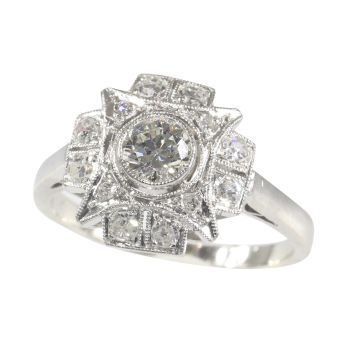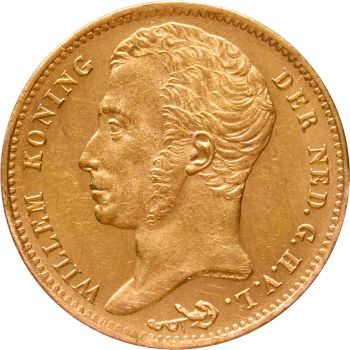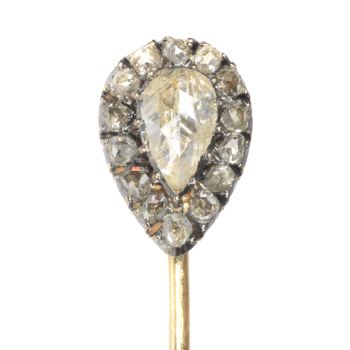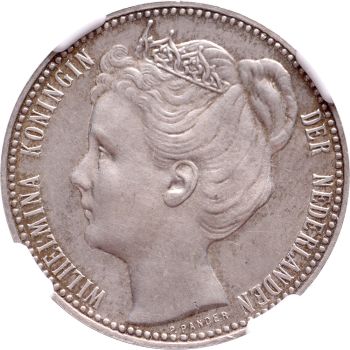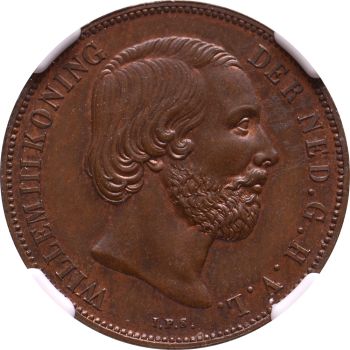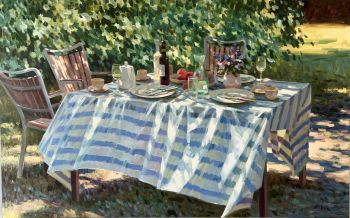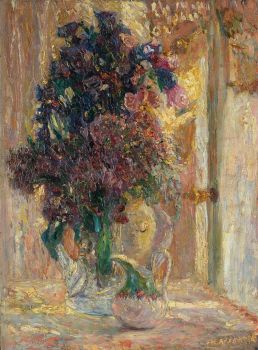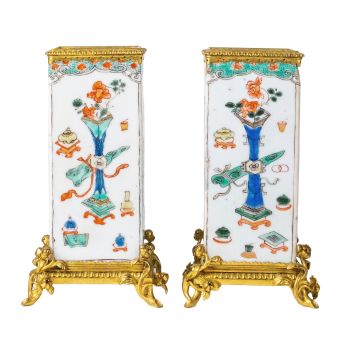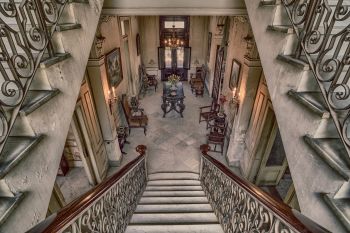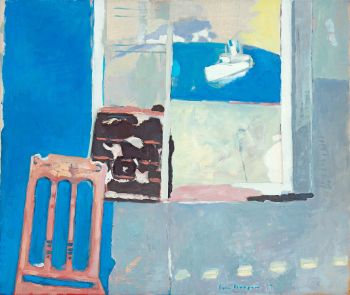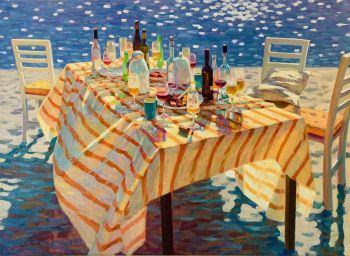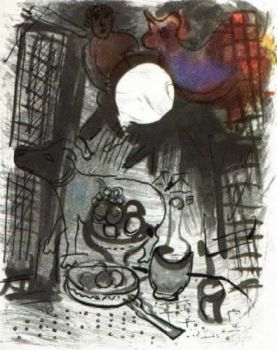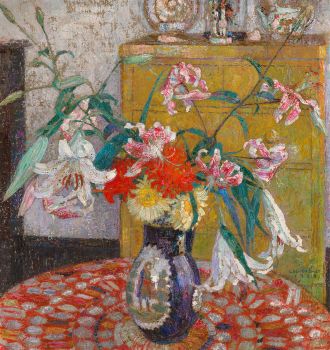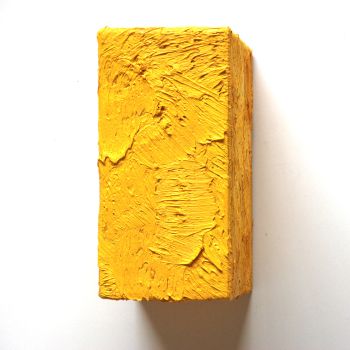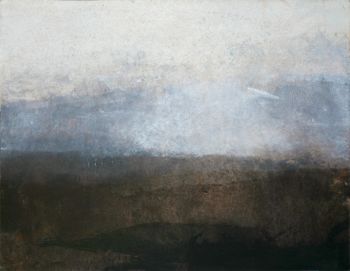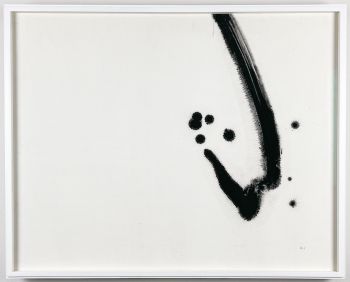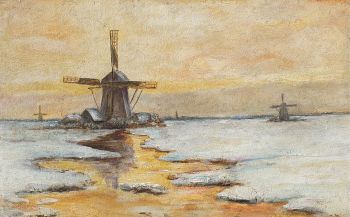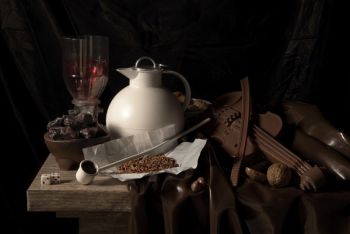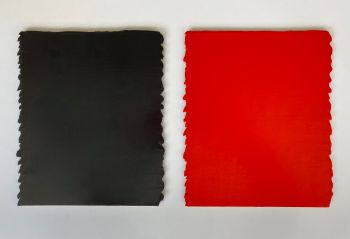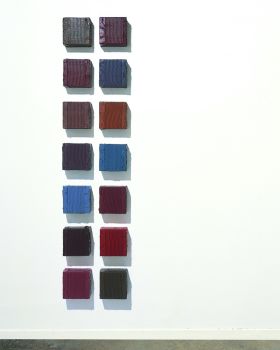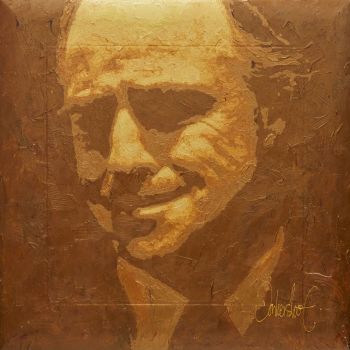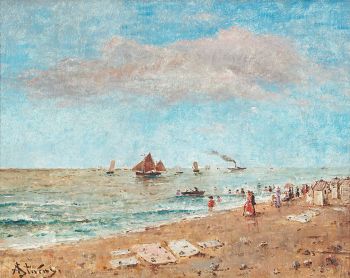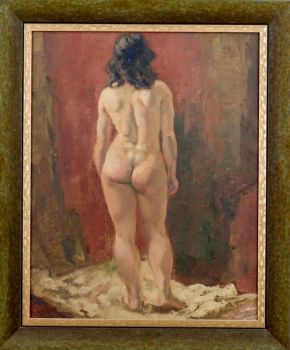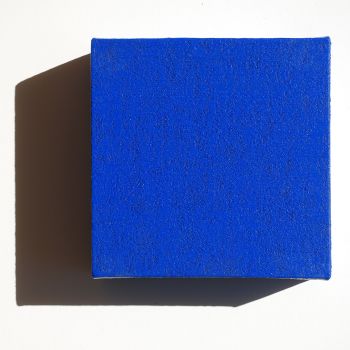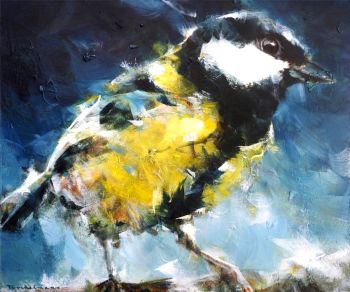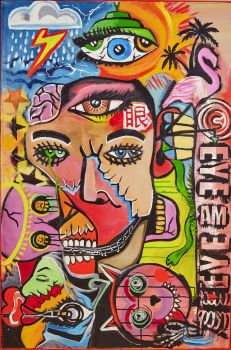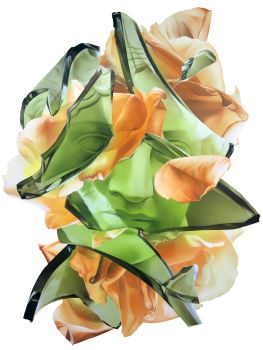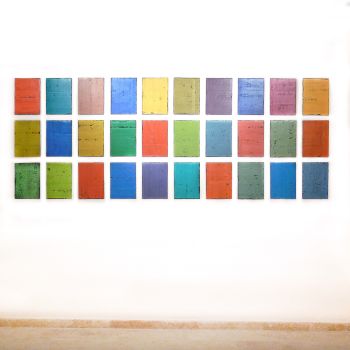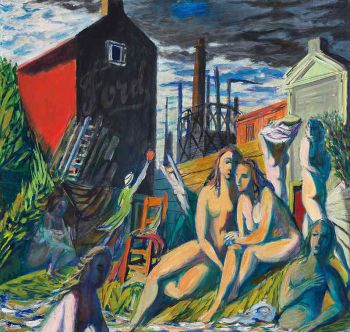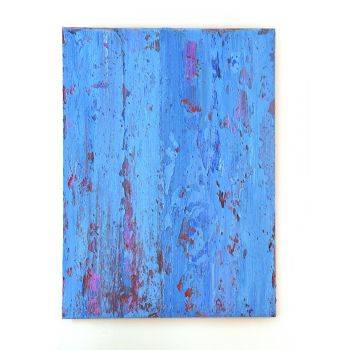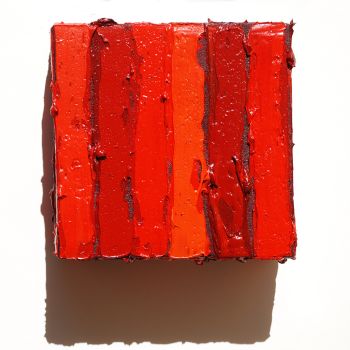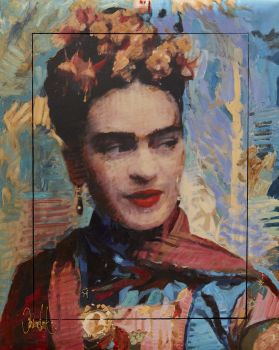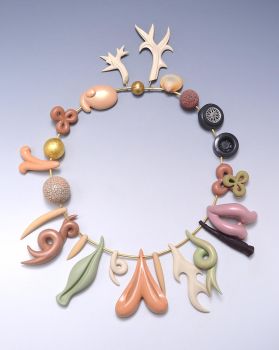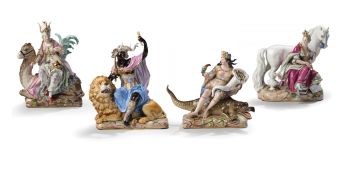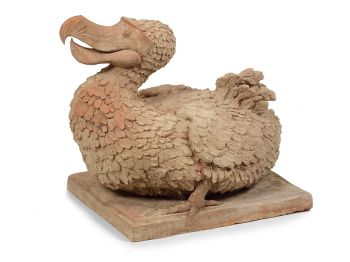UNA RARA SCULTURA COLONIALE FRANCESE DI UNA COPPIA DELLE ANTILE FRANCESI, CHE BEVE RUM E CIOCCOLATO 18th century
Artista Sconosciuto
Legna
Attualmente non disponibile tramite Gallerease
Zebregs & Röell - Fine Art - Antiques
- A proposito di opere d'arteA RARE FRENCH COLONIAL SCULPTURE OF A COUPLE FROM THE FRENCH WEST INDIES, DRINKING RUM AND CHOCOLATE
The French Antilles or French Guyana, late 18th/early 19th century
The painted plaster figures with wood, glass and gilt braid, seated at a table, happily drinking and conversating, on a rectangular black base with four bun feet.
H. 20 x W. 27 x D. 18 cm
Provenance:
Joseph-Armand Coudre la Coudrais (1751-before 1809) and thence by descent.
Joseph-Armand came from a family of sailors and was captain of the Phénix and the L’aimable Rose, importing rum and cacao from the French West Indies.
So possibly Joseph-Armand himself commissioned this sculpture of the rum and cacao drinking couple in the French West Indies. His portrait is in the Musée de la Marine in Honfleur.
Note:
This sculpture makes one think of the diorama’s made by Gerrit Schouten in Dutch Guyana/Surinam. Schouten’s clients were Europeans who visited Surinam for a shorter or longer period. Gerrit Schouten, who’s mother was a mulatto and father a Dutchman, depicted the African slaves in Surinam almost exclusively while performing a slavedance, a du (see for an example Uit Verre Streken, June 2008,item 8). Once or twice a year the slaves on the plantations were allowed to make music, dance and dress-up for two or three days. These du’s, which ofcourse presented a very limited but colourful picture of “happy” slave-life in Surinam, were very popular among tourists who afterwards ordered a diorama of a slave dance from Gerrit Schouten.
In the background, a detail of a chromolithograph titled Baumwolle (cotton) from the series Ausländische Kulturpflanzen by Goering & Schmidt, printed and edited by F.E. Wac - A proposito di opere artista
Può succedere che un artista o un creatore sia sconosciuto.
Alcune opere non sono determinate da chi sono state realizzate o sono state realizzate da (un gruppo di) artigiani. Esempi sono statue dell'antichità, mobili, specchi o firme non chiare o leggibili ma anche alcune opere non sono affatto firmate.
Inoltre puoi trovare la seguente descrizione:
•"Attribuito a …." A loro avviso probabilmente opera dell'artista, almeno in parte
•“Studio di ….” o “Officina di” A loro avviso un'opera eseguita nello studio o nella bottega dell'artista, eventualmente sotto la sua supervisione
•“Cerchio di…” A loro avviso un'opera del periodo dell'artista che mostra la sua influenza, strettamente legata all'artista ma non necessariamente al suo allievo
•"Stile di..." o "Seguace di..." A loro avviso un'opera eseguita nello stile dell'artista ma non necessariamente da un allievo; può essere contemporaneo o quasi contemporaneo
•“Modalità di…” A loro avviso un'opera nello stile dell'artista ma di epoca successiva
•"Dopo …." A loro avviso una copia (di qualsiasi data) di un'opera dell'artista
•“Firmato…”, “Datato…” o “Iscritto” A loro avviso l'opera è stata firmata/datata/inscritta dall'artista. L'aggiunta di un punto interrogativo indica un elemento di dubbio
•"Con firma....", "Con data...", "Con iscrizione..." o “Riporta firma/data/iscrizione” a loro avviso la firma/data/iscrizione è stata aggiunta da qualcuno diverso dall'artista
Sei interessato ad acquistare questa opera d'arte?
Artwork details
Related artworks
- 1 - 4 / 12
Artista Sconosciuto
UN NETSUKE MARINO IN AVORIO DI UN OLANDESE CHE TIENE UN FAN . CINESE18th century
Prezzo su richiestaZebregs & Röell - Fine Art - Antiques
Artista Sconosciuto
UN RARO SADELI INDIANO COMPLETO DI LAVORO E SCRITTURA INTARSIATI1800 - 1850
Prezzo su richiestaZebregs & Röell - Fine Art - Antiques
Artista Sconosciuto
COPPIA DI TORCHÈRE O PORTACANDELE IN TEAK INDONESI LACCATI E DORATI18th century
Prezzo su richiestaZebregs & Röell - Fine Art - Antiques
Artista Sconosciuto
UN NETSUKE IN AVORIO DI UN OLANDESE CHE TIENE UN GALLETTO18th century
Prezzo su richiestaZebregs & Röell - Fine Art - Antiques
Artista Sconosciuto
UN RARO GRANDE TELESCOPIO GIAPPONESE IN PELLE LACCATA1750 - 1800
Prezzo su richiestaZebregs & Röell - Fine Art - Antiques
Artista Sconosciuto
The Stamford Raffles Secretaires.1800 - 1813
Prezzo su richiestaZebregs & Röell - Fine Art - Antiques
Artista Sconosciuto
UN PICCOLO NETSUKE IN AVORIO DI UN OLANDESE CON UN TAMBURO1750 - 1800
Prezzo su richiestaZebregs & Röell - Fine Art - Antiques
Artista Sconosciuto
UN CONTENITORE PER DOCUMENTI DELLO SRI LANKA IN ARGENTO DORATO19th century
Prezzo su richiestaZebregs & Röell - Fine Art - Antiques
Artista Sconosciuto
UN NETSUKE IN AVORIO DI UN OLANDESE CHE GIOCA CON UN RAGAZZINO18th century
Prezzo su richiestaZebregs & Röell - Fine Art - Antiques
1 - 4 / 24Artista Sconosciuto
A Surinam-themed Amsterdam long-case clock1746 - 1756
Prezzo su richiestaZebregs & Röell - Fine Art - Antiques
 A cura di
A cura diGallerease Magazine
Artista Sconosciuto
Japanese transition-style lacquer coffer 1640 - 1650
Prezzo su richiestaZebregs & Röell - Fine Art - Antiques
Artista Sconosciuto
Un rare filigrane un gobelet retortoli1550 - 1600
Prezzo su richiestaPeter Korf de Gidts - Antiquairs
1 - 4 / 24Alfred Stevens
ZEEGEZICHT MET ZEILSCHEPEN, STOOMBOTEN EN FIGUREN1823 - 1906
Prezzo su richiestaGalerie Het Noorderlicht
1 - 4 / 24Artista Sconosciuto
A silver spoon commemorating Juff’ Margareta van Hoorn1656 - 1694
Prezzo su richiestaZebregs & Röell - Fine Art - Antiques
Artista Sconosciuto
Japanese transition-style lacquer coffer 1640 - 1650
Prezzo su richiestaZebregs & Röell - Fine Art - Antiques
Artista Sconosciuto
Olandesi in miniatura (Netsuke)1700 - 1900
Prezzo su richiestaZebregs & Röell - Fine Art - Antiques
Carlo Bellini
A terracotta sculpture of a dodo20th century
Prezzo su richiestaZebregs & Röell - Fine Art - Antiques
1 - 4 / 12


